Related Research Articles

The Battle of Carillon, also known as the 1758 Battle of Ticonderoga, was fought on July 8, 1758, during the French and Indian War. It was fought near Fort Carillon on the shore of Lake Champlain in the frontier area between the British colony of New York and the French colony of New France.

The Battle of the Plains of Abraham, also known as the Battle of Quebec, was a pivotal battle in the Seven Years' War. The battle, which began on 13 September 1759, was fought on a plateau by the British Army and Royal Navy against the French Army, just outside the walls of Quebec City on land that was originally owned by a farmer named Abraham Martin, hence the name of the battle. The battle involved fewer than 10,000 troops in total, but proved to be a deciding moment in the conflict between France and Britain over the fate of New France, influencing the later creation of Canada.
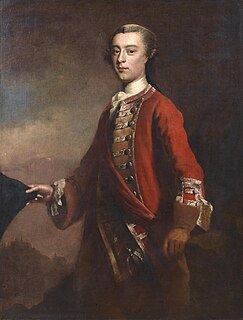
James Wolfe was a British Army officer known for his training reforms and remembered chiefly for his victory in 1759 over the French at the Battle of the Plains of Abraham in Quebec as a major general. The son of a distinguished general, Edward Wolfe, he received his first commission at a young age and saw extensive service in Europe during the War of the Austrian Succession. His service in Flanders and in Scotland, where he took part in the suppression of the Jacobite Rebellion, brought him to the attention of his superiors. The advancement of his career was halted by the Peace Treaty of 1748 and he spent much of the next eight years on garrison duty in the Scottish Highlands. Already a brigade major at the age of 18, he was a lieutenant-colonel by 23.

Louis-Joseph de Montcalm-Grozon, marquis de Montcalm de Saint-Veran was a French soldier best known as the commander of the forces in North America during the Seven Years' War.
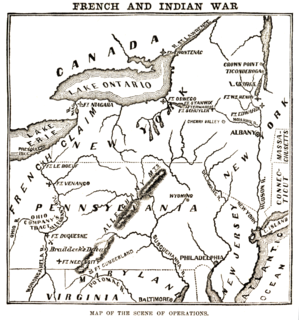
The 1759 Battle of Ticonderoga was a minor confrontation at Fort Carillon on July 26 and 27, 1759, during the French and Indian War. A British military force of more than 11,000 men under the command of General Sir Jeffery Amherst moved artillery to high ground overlooking the fort, which was defended by a garrison of 400 Frenchmen under the command of Brigadier General François-Charles de Bourlamaque.
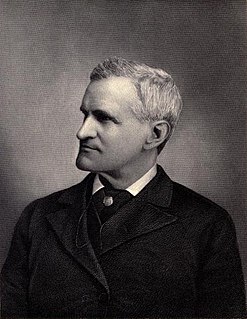
Francis Parkman Jr. was an American historian, best known as author of The Oregon Trail: Sketches of Prairie and Rocky-Mountain Life and his monumental seven-volume France and England in North America. These works are still valued as historical sources and as literature. He was also a leading horticulturist, briefly a professor of horticulture at Harvard University and author of several books on the topic. Parkman wrote essays opposed to legal voting for women that continued to circulate long after his death. Parkman was a trustee of the Boston Athenæum from 1858 until his death in 1893.

Events from the year 1759 in Canada.
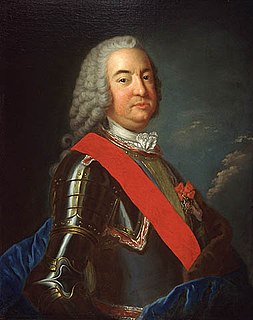
Pierre de Rigaud de Vaudreuil de Cavagnial, marquis de Vaudreuil was a Canadian-born colonial governor of French Canada in North America. He was governor of French Louisiana (1743–1753) and in 1755 became the last Governor-General of New France. In 1759 and 1760 the British conquered the colony in the Seven Years' War.
France and England in North America (ISBN 1-425-56179-9) is a multi-volume history of the European colonization of North America, written by Francis Parkman and published between 1865 and 1892, which highlights the military struggles between France and Great Britain. It was well regarded at the time of publication, and continues to enjoy a reputation as a literary masterpiece.

Rogers' Rangers was a company of soldiers from the Province of New Hampshire raised by Major Robert Rogers and attached to the British Army during the Seven Years' War. The unit was quickly adopted into the British army as an independent ranger company. Robert Rogers trained and commanded the rapidly deployed light infantry force, which was tasked mainly with reconnaissance as well as conducting special operations against distant targets. Their tactics were built on earlier colonial precedents and were codified for the first time by Rogers as his 28 "Rules of Ranging". The tactics proved remarkably effective, so much so that the initial company was expanded into a ranging corps of more than a dozen companies. The ranger corps became the chief scouting arm of British Crown forces by the late 1750s. The British forces in America valued Rogers' Rangers for their ability to gather intelligence about the enemy. They were disbanded in 1761.

The Battle of Fort Oswego was one in a series of early French victories in the North American theatre of the Seven Years' War won in spite of New France's military vulnerability. During the week of August 10, 1756, a force of regulars and Canadian militia under General Montcalm captured and occupied the British fortifications at Fort Oswego, located at the site of present-day Oswego, New York.
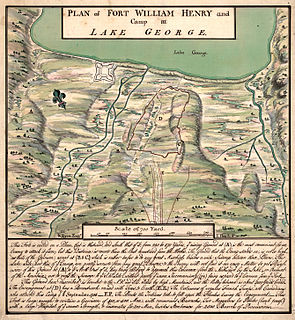
The Siege of Fort William Henry was conducted by French General Louis-Joseph de Montcalm against the British-held Fort William Henry. The fort, located at the southern end of Lake George, on the frontier between the British Province of New York and the French Province of Canada, was garrisoned by a poorly supported force of British regulars and provincial militia led by Lieutenant Colonel George Monro. After several days of bombardment, Monro surrendered to Montcalm, whose force included nearly 2,000 Indians from various tribes. The terms of surrender included the withdrawal of the garrison to Fort Edward, with specific terms that the French military protect the British from the Indians as they withdrew from the area.

The Oneida Carry was an important link in the main 18th century trade route between the Atlantic seaboard of North America and interior of the continent. From Schenectady, near Albany, New York on the Hudson River, cargo would be carried upstream along the Mohawk River using boats known as bateaux. At the location at modern-day Rome, New York, the cargo and boats would be portaged one to four miles overland to Wood Creek. This portage, which the Haudenosaunee called De-o-Wain-Sta, was known as the Oneida Carry or The Great Carrying Place in English, and as Trow Plat in Dutch. After relaunching into Wood Creek, the bateaux would navigate downstream to Oneida Lake, the Oswego River, and ultimately Lake Ontario at Oswego. Lake Ontario was the gateway to all the Great Lakes stretching another thousand miles inland.

Henri-Raymond Casgrain was a French Canadian Roman Catholic priest, author, publisher, and professor of history.
On November 12, 1757, during the French and Indian War, a company of French and Indian warriors staged an attack on German Flatts, on the north side of the Mohawk River in the British Province of New York. The settlement of Palatine German refugees and their families was destroyed, and many of the men, women and children were taken prisoner.
The Jesuits in North America in the Seventeenth Century is the second volume in Francis Parkman's seven-volume history, France and England in North America, originally published in 1867. It tells the story of the French Jesuit missionaries in Canada, then New France, starting from their arrival in 1632.

Wood Creek is a river in Central New York State that flows westward from the city of Rome, New York to Oneida Lake. Its waters flow ultimately to Lake Ontario, which is the easternmost of the five Great Lakes. Wood Creek is less than 20 miles (32 km) long, but has great historical importance. Wood Creek was a crucial, fragile link in the main 18th and early 19th century waterway connecting the Atlantic seaboard of North America and its interior beyond the Appalachian Mountains. This waterway ran upstream from the Hudson River along the Mohawk River. Near present day Rome, the Mohawk River is about one mile from Wood Creek across dry land. In the 18th century, cargo and boats were portaged between the Mohawk and Wood Creek; the crossing was called the "Oneida Carry". In 1797, the Rome Canal was completed and finally established an all-water route. The waterway then followed a downstream run along Wood Creek to the east end of Oneida Lake. After a 20 mile crossing to the west end of the lake, the waterway entered the Oswego River system. This system led either to the Lake Ontario port at Oswego, or further westward along the Seneca River.

The Louisbourg Expedition (1757) was a failed British attempt to capture the French Fortress of Louisbourg on Île Royale during the Seven Years' War.
François-Marie Le Marchand de Lignery was a colonial military leader in the French province of Canada. Active in the defense of New France during the Seven Years' War, he died of wounds sustained in the 1759 Battle of La Belle-Famille.
Brigadier-General Edward Whitmore was a British soldier who served in Europe and North America.